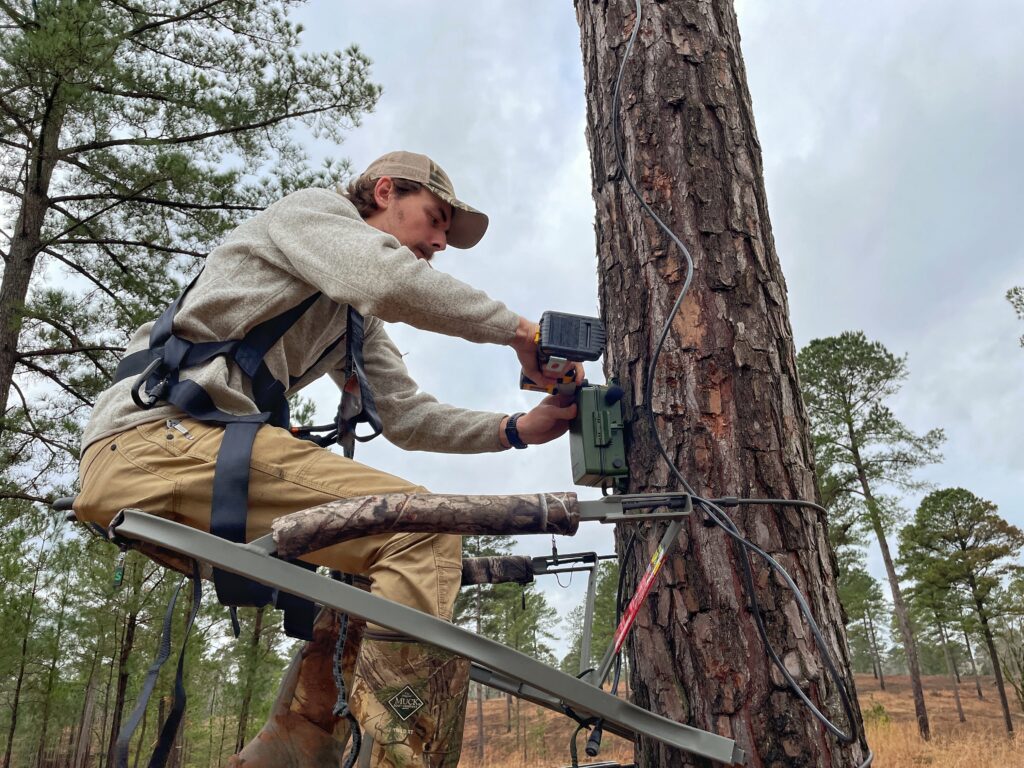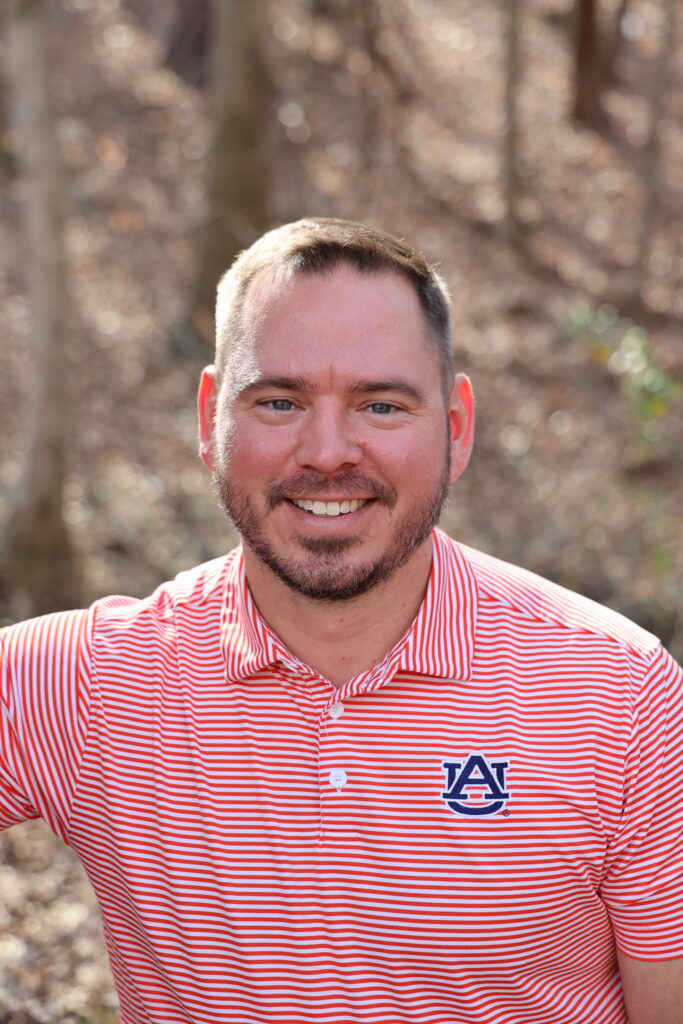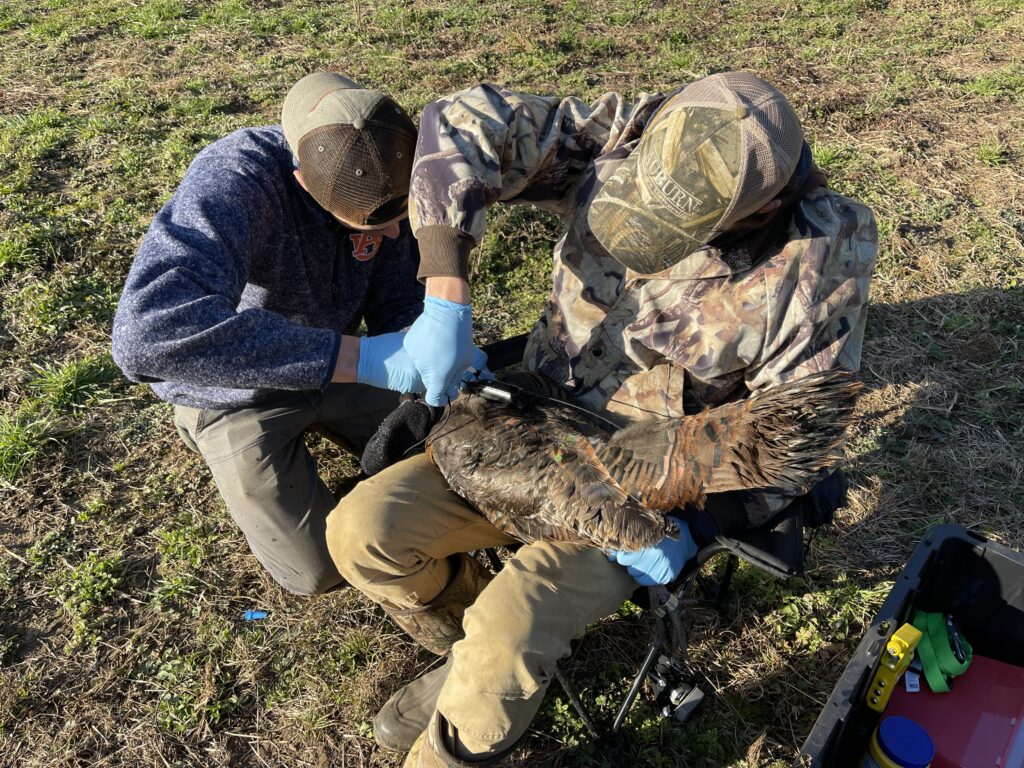Answering The Call: Research Seeks Solution To Turkey Population Decline

By Marlee Moore
A cooperative wild turkey research project is answering Alabama landowners’ call to reverse the state’s downward-trending turkey population.
In 2006, hunters harvested a state record 65,000 turkeys. That number was slashed in half just over a decade later.
“That was a high harvest, in the Top 3 of any state; since then, the population has trended down,” said Auburn University’s Dr. Will Gulsby. “That’s happening range-wide for Eastern wild turkeys.”
Big Picture
In addition to its $3.88 billion annual economic impact in Alabama, hunting — particularly for turkeys — is ingrained in Alabama history, Gulsby said. Pockets of wild birds thrived in Alabama during previous Southeastern turkey population declines in the late 19th and early 20th centuries.
“It’s a preferred pastime for people,” said Gulsby, a wildlife ecology and management professor. “It’s easy for us to get caught up in the sustainability and economic perspective, but turkey hunting also brings cultural value to the table.”
Gulsby is working with a team of students, professors, public agencies and private industry to pinpoint problem areas and resolve turkey decline. The science-based research is funded by Turkeys For Tomorrow and the Alabama Wildlife Federation.

Additional partners include the Alabama Farmers Federation, which funded autonomous recording devices (also called gobble recorders, song meters or listening devices) for field trials.
Potential Problems
Gulsby said a confluence of issues could be causing turkey troubles, including new diseases, predator shifts, a decline in predator trapping, feral swine increases and evolving technology.
Habitat shifts are concerning, too. Row crop fields flush with weedy, brushy edges have historically offered prime nesting habitat for hens, Gulsby said. But the advent of the Conservation Reserve Program (CRP) helped many landowners turn open fields into pine plantations.
Those plantations can absolutely serve as turkey habitat — depending on how they’re managed, Gulsby said.
Just ask private land consultant Hunter Smith.
The Auburn wildlife science graduate has crafted his management style over the last decade on family land in Bullock and Pike counties, where turkey populations have doubled and even tripled.
Through detailed, thoughtful management, he routinely burns small tracts of timber on a rotation to create varied vegetation levels.
“No matter the size of your property, you need habitat diversity,” Smith said. “Trapping for predators has made the biggest difference on our property. We’ve seen a huge jump in turkey numbers since we’ve started doing that.”
Smith’s ideology grew from trial and error — and scouring research publications.
And Gulsby hopes current research will help more turkey populations across Alabama boom.

Answering The Call
State poult-per-hen ratios show the decline isn’t just a land-management or hunter problem. It’s a reproduction issue, too.
Stable or increasing populations normally track two poults for each hen. Alabama’s rate is 1.5 to 1.7 per hen, Gulsby said.
One aspect of Gulsby’s research analyzes hunter-harvested turkey carcasses for reproductive and disease issues. Another component includes nearly 100 song meters across private and public land in three swaths of the state — north, central and south.
The trail camera-like devices are placed near the base of a tree, and an attached microphone mounted 30 feet above records sound from an hour before sunrise to five hours after.
Software and student workers comb through data captured March 1-June 30 to identify gobbles.
“This allows us to get a broad-scale picture of trends in abundance across the state so we can identify where populations are performing well and those performing poorly,” Gulsby said. “If we do find that areas that look a certain way have more turkeys, how do we replicate that?”
Birds Of A Feather
The team is also scouting habitat by placing GPS transmitters on hens in Hale County to track nesting and brooding locations. They’ll take vegetation measurements after hatching to determine trends in the surrounding plant community.
In Bullock County, the Federation’s gift is at work through eight song meters. The devices measure gobbling activity in areas where feral swine are being trapped and locations without active trapping through a collaborative project with Auburn wildlife professor Dr. Steve Ditchkoff and the U.S. Department of Agriculture.
“We’re excited to see results roll out this fall,” said Federation Wildlife Division Director William Green. “We’re committed to helping farmers, landowners and hunters fine-tune the best land and wildlife management techniques and believe this project could help achieve that.”
Turkey Talk
Learn more about Gulsby’s preliminary findings through his podcast, Wild Turkey Science, available across listening platforms.
